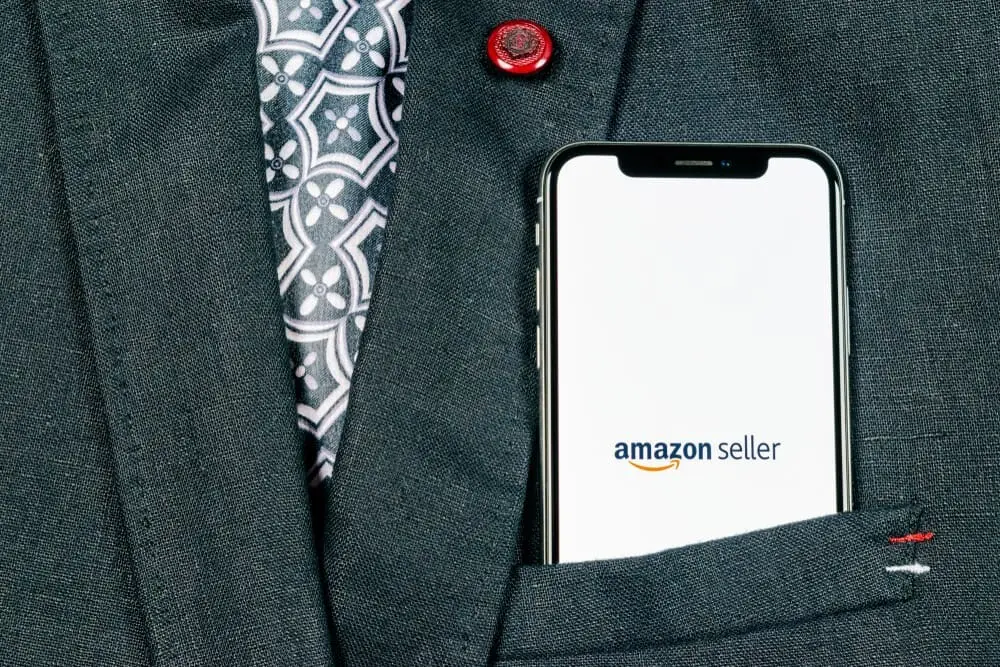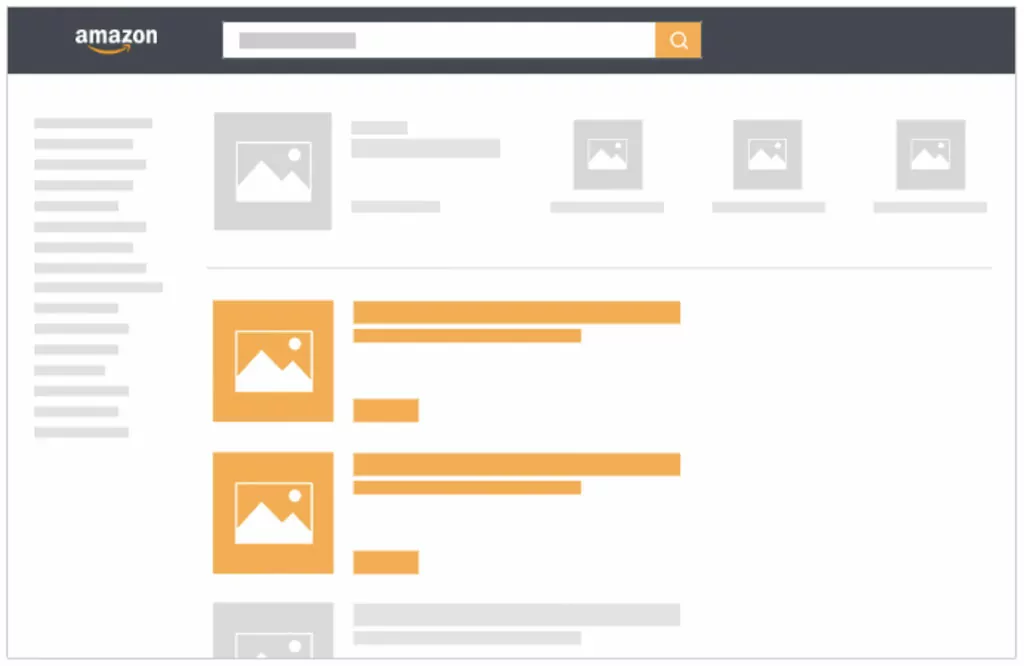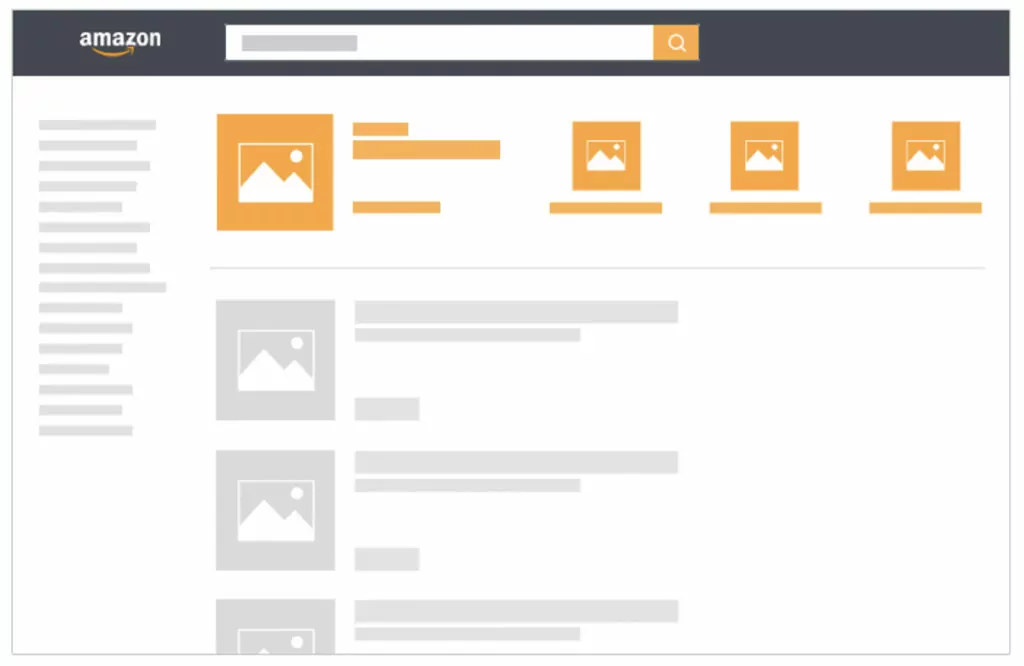
To become a successful Amazon seller, you have to do more than just create an account, create product listings, and wait for international success. Before conquering other markets through Amazon Marketplace, it is crucial to understand how to sell on Amazon, what benefits the marketplace offers, which goods can be sold, and what to expect from FBM and FBA business models. This guide will answer all the burning questions of beginner sellers who are yet to take their first steps on Amazon Europe. Enjoy!

Amazon in Sweden
Swedish customers can visit their local Amazon marketplace and choose from over 150 million product listings offered by both Swedish and European retailers. The shopping habits of Swedes are likely to change, as Amazon offers free delivery of orders above 229 SEK – a service that is still much less common in Sweden than in other countries. Many experts claim that Amazon.se will become the biggest marketplace in Sweden in just 5–10 years, due to the high number of Amazon sellers and the wide variety of Amazon services, such as tools for sales optimisation and automation.
Is selling on Amazon worth it?
Selling on Amazon has many considerable advantages. The most important of them include:
• Ability to sell products on 8 European Amazon markets with millions of customers,
• Access to an online sales platform that is universally trusted on international markets,
• Ability to sell products through Amazon warehouses,
• Access to safe payment systems,
• Access to useful sales and logistics tools,
• Access to reports and order data,
• Ability to promote your offers – currently advertising on Amazon can be six times more effective than Google Ads.
How to start selling on Amazon?
Selling products on Amazon is fairly simple but to optimise your sales, you have to know the correct processes and operate in accordance with the platform’s conditions of use. If you want to succeed on Amazon Europe, it is crucial that you play by Amazon’s rules, as the marketplace’s attitude is very pro-customer.
To start selling your products on Amazon, you need to complete the set up process – though it may differ, depending on your business profile. A distributor’s set up on Amazon will be very different from that of a brand owner.
First steps on Amazon – brand owner
- Analyse the sales potential of your products on foreign markets. Ask for an Amazon sales forecast – free of charge.
- Create an Amazon account.
- Add your products manually or all at once using an Excel file. to do so, you can use the product name or its external identifier, for instance UPC, EAN or ISBN.
- Configure the most important settings of your account – sales and logistics model (Fulfilment by Amazon – FBA, Fulfilment by Merchant – FBM), VAT information, complaints and returns policy, etc. We are happy share our knowledge and experience with you – we will gladly help you configure your account to maximise your sales.
- Set the prices of your products. You can do it on our platform.
- Start selling on Amazon.
How to sell your own products – step by step
If you’re a brand owner, your strategy will start with listing your products on Amazon. 78% of Amazon searches do not include brand names, so it is crucial to thoroughly research your key phrases. What’s more, you should register your own brand in EUIPO and the Amazon Brand Registry. Consider investing in marketing as well so that your product reaches as many potential customers as possible.
What do you need to do to start selling on Amazon?
- Analyse your target market and potential competition.
- Choose products that are likely to achieve high sales. Learn which products might deliver higher profits on Amazon.
- Create an Amazon account.
- Add your products and create your listings in the language of your target market. Note: to add your products, you will need EAN/UPC codes, descriptions and photos.
- Register your brand in the Amazon Brand Registry to achieve full protection. Take advantage of our know-how to register your brand on Amazon easily and quickly.
- Configure the most important settings of your account, choose the logistics model (Fulfilment by Amazon – FBA, Fulfilment by Merchant – FBM), VAT, complaints and returns policy, etc.
- Calculate an appropriate sales price for your products.
- Start selling on Amazon.
IMPORTANT!
Before your products can be added to Amazon, you need to have EAN, GTIN, or UPC codes. Amazon does not allow for the sale of products without these codes, so remember to obtain them before registering your brand.
Seller Central and Vendor Central – what are these?
Amazon offers various business models on its platform. Generally, they can be divided into Seller Central and Vendor Central. Seller Central has been designed for the sellers who sell their products directly to Amazon customers through its marketplace. Vendor Central is all about the sellers who sell products in bulk to Amazon for further distribution.
FBA
Fulfilment by Amazon (FBA) is a sales model in which the seller’s products are sent directly to Amazon warehouses without the change of ownership. Once you sell the product, Amazon dispatches it to a specified address and takes care of customer service as well. FBA is a paid model.
FBM
Fulfilment by Merchant (FBM) is an Amazon sales model in which the seller’s products are listed on Amazon, but it is the seller who manages their own warehouse and delivery, as well as customer service – it is done independently or with the help of another logistics operator.
How to sell on Amazon successfully – marketing and advertising on Amazon
Amazon offers a wide range of marketing possibilities. If you want to promote your own goods, at your disposal are numerous promotional tools that will help your products stand out. Still, keep in mind that promotions bring the best results when your offer is displayed in the Buy Box. To learn more about it, read our article about how to win Buy Box . There are many promotion types to choose from including, discount coupons and the so-called percentage off promotions.
SEO on Amazon
Just like Google, Amazon has its own search algorithm, known as A10 (some sources use the name A9). There are many factors you need to consider if you want your store listings to be displayed at the very top of the search results. Some of them include:
- Sales value and conversions – the higher it is the better the search rankings
- Appropriate keywords used in descriptions;
- Optimised titles of product offers;
- Bullet points;
- Attractive product photos (to boost sales).
The most popular ad formats on Amazon include:
- Sponsored Products
- Sponsored Brands
- Sponsored Display
Sponsored Products are ads suitable for resellers, brands and vendors.

- They promote individual products.
- They appear within listings and in the search results.
- When users click them, they are redirected to the advertised product listing.
Sponsored Brands are ads for brands and vendors.

- They promote several selected products.
- They appear at the top, the middle or at the bottom of the search results list.
- When users click the product, they are redirected to the product listing. When they click the header or the logo, however, they are redirected to the brand store or product page.
Sponsored Display ads are appropriate for brands and vendors.

- They promote individual products.
- They appear in the Marketplace, on external sites (for instance, on imdb.com) and in Amazon mobile apps – depending on the targeting settings (audiences: views/interests).
- When users click them, they are redirected to the advertised product listing.
Amazon Vine
Amazon Vine is a very interesting solution that can be used to receive feedback on the items you sell. It makes it possible to receive product reviews from Amazon customers (known as Vine Voices) who are selected on the basis of their shopping habits. Each Vine Credit allows for sending 30 pieces of a given product to reviewers, and what comes with it – receiving 30 reviews. It is an incredible way to obtain additional product reviews.
How to sell on Amazon?
The steps described above are just the beginning of a successful journey on Amazon. To fly high, you will also need to constantly manage your account and provide customer service – some of your tasks will include answering questions concerning your products (within time limits specified by Amazon), monitoring your business performance, managing your inventory, optimising business processes, implementing market specific strategies, as well as running marketing campaigns.
How to sell to make profit on Amazon? Below are 11 tips from the Nethansa’s experts.
1. Automate time-consuming activities and gain time to grow your business.
Issuing bills of lading, ordering couriers, matching products, managing orders and returns, updating inventories, managing content – all these activities require time. Amazon Appstore offers tools that will help you automate them. One of such solutions is our Nethansa Platform. It is a proprietary tool that uses advanced algorithms to automate and maximise sales on 8 European Amazon markets and on Kaufland.de.
Learn more about Nethansa Platform
2. Create product listings in accordance with SEO rules. Make sure that your content is of the highest quality.
To sell efficiently, thoroughly analyse the listings and keywords used by other sellers. Pay particular attention to titles, key product features (bullet points), product descriptions and photos.
3. Purposefully adjust and combine available selling models (FBA, FBM, Vendor).
Each sales model has its advantages and disadvantages. Fulfilment by Merchant (FBM) is perfect for sellers who offer exclusive or unique products. Fulfilment by Amazon (FBA) has been designed for experienced sellers who want to scale their sales. Sellers who use the FBA model are more likely to win the Buy Box! With the right strategy, you may successfully combine the available selling models. This way, you will be able to use each of them to your benefit.
4. Ensure the highest quality of communication with international buyers.
When selling products on international markets, you need a team that is able to communicate with your customers in their own language. When it comes to customer service, short response time (up to 24 hours) is crucial, and so is 365/24/7 availability. You also need to prepare for keeping in touch with the Amazon team.
5. Make sure your products get good reviews.
Encourage your buyers to rate your products! You may do so by, for instance, including acknowledgement inserts to packages that will be delivered to your customers.
6. Adopt a practical inventory policy.
Make sure you have enough goods in stock at all times. If you sell seasonal products, the demand can be as much as 2 or 3 times higher in season than out of season.
7. Focus on winning the Buy Box.
A product-demand based inventory management, optimal delivery time and a positive feedback rate play a huge role in winning the Buy Box. It’s worth the effort, as the Buy Box accounts for 82% of all sales on Amazon.
8. Are you a brand owner? Try a PPC campaign on Amazon.
Amazon offers various advertising formats: based on the CPC model, aimed at increasing conversion or focused on brand image. To increase your products’ visibility, consider investing in Sponsored Products ads.
9. Are you a reseller? Scale up your sales with a repricing tool.
To gain an advantage in selling the products of well-known brands, you have to know the prices offered by other sellers. You may check them manually, but it takes quite some time. Alternatively, you may use proven, AI-driven technologies to instantly calculate the sales potential of selected products and determine which prices will be most attractive to the customer when compared to other offers.
Find out more about our service offer for resellers
10. Do not use one universal strategy for all Amazon Europe markets!
When operating in international markets, you need to familiarise yourself with each of them and learn more about running a store in a given country. For instance, a seller operating in the French market has to obtain written permission of the manufacturer to sell certain goods on Amazon. If you do not meet these requirements, Amazon may end up blocking your account.
11. When selecting which products to sell on Amazon, use Big Data and sales forecasting.
At your disposal are many advanced tools that can be used to analyse the sales potential of your products. They calculate the demand, determine the number of goods that ought to be ordered and check the prices offered by other sellers. Nethansa Platform is one such tool.
Increase your profits in 8 European Amazon markets and on Kaufland.de
Learn more about Nethansa Platform






